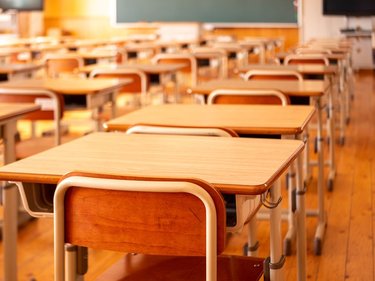Fighting absenteeism: ‘Every single staff member is responsible’ says VCSD super
A problem already seen as a “hidden educational crisis,” was just one of many societal challenges made all too visible by the onset of a generational global pandemic.
For K-12 students, chronic absenteeism is typically defined as missing at least 10 percent of the school year, for any reason, excused or unexcused.
In the world prior to COVID-19, the overall chronic absenteeism rate in the country was about 15 percent, about 7.3 million students. In the pandemic’s wake, the 2020-21 school year, that figure nearly doubled, according to an analysis of state and national attendance data by Nat Malkus of the conservative American Enterprise Institute.
Chronic absenteeism is not a new phenomenon.
Why it appears at least in part to be a crisis born of the pandemic is that its impact has been felt outside the subsets of students typically associated with the issue: those with special needs or individual education plans; or English language learners; or students who receive free and reduced-price lunches; or students who are Black or brown.
What the pandemic did, according to researchers, was upend the traditional relationship society has with K-12 learning. As attendance and grading policies grew lax and remote learning became a good-enough option, showing up to school every day became more optional for some.
Locally, the rates of pre-COVID chronic absenteeism never rose as high as the national number, according to state data. But two of the three school districts in The Enterprise coverage area have seen chronic absenteeism more than double post-pandemic, mirroring the national trend.
During the 2018-19 school year, the Voorheesville Central School District’s chronic absenteeism rate was about 5 percent; it then spiked to nearly 14 percent during the 2021-22 school year, before beginning to subside the following year, down to about 12.5 percent.
In Guilderland, the 2018-19 chronic absenteeism rate was about 8 percent. It then hit over 20 percent during the 2021-22 school year, falling to approximately 16 percent in 2022-23.
The Berne-Knox-Westerlo Central School District appears to be a slight outlier when it comes to the pandemic’s impact on student attendance. Almost 11 percent of BKW students during the 2018-19 school year were chronically absent, a figure that nearly hit 17 percent in 2021-22, before it fell back to pre-pandemic attendance, about 13 percent for the 2022-23 school year.
At VCSD
During the July meeting of the Voorheesville School Board, Superintendent Frank Macri briefly spoke about the issue.
“This year, I stated that we would do an attendance report, so let’s talk about chronic absence here,” Macri said. “So when we talk about a lot of things that we talk about, it can be very confusing when you’re not in it every single day.”
Macri then explained to the board and public the definition of chronic absenteeism.
The other thing Macri sought to make clear was the difference between chronic absenteeism and daily attendance.
“So your annual daily attendance, your ADA rate is what we call it, it’s like how many kids are coming in the whole day,” Macri said, it’s an aggregate overview of attendance, for Clayton A. Bouton High School, it’s “about 93 percent daily.”
Data submitted to the New York Education Department show about 17 percent of Voorheesville’s high school as chronically absent.
The annual daily attendance rate, Macri said, “that’s not your individual [rate],” chronic absenteeism “is only for one student at a time.”
The issue for the district, he said, is working to identify those students so an effort can be made to ensure “they’re in school at all times.”
To identify chronic absenteeism, Macri said that Voorheesville performs weekly and monthly attendance reviews. From there, letters can be sent home , phone calls can be made, as can home visits, and parents meetings, and transition plans can be made.
But before those steps become necessary, Macri emphasized the important role school staff can play and has played in combating absenteeism.
“The staff that are involved,” Macri said. “Really, I put this in a bullet point.”
And it’s all staff, Macri said, not just teachers and administrators, it’s bus drivers, teaching assistants, secretaries, any individual who works in the building.
“That’s why I said all staff that have [a] connection with students can have a profound impact.”
Macri went on, “Every single staff member in this district is responsible,” citing as an example an anecdote from recent graduate Paige Layman.
In a June interview with The Enterprise, Layman was asked about her favorite teacher from her time at Voorheesville.
“[It] would probably have to be the custodian,” Lance Junco, “who greets me at the door every morning,” she said.
Layman, who was Clayton A. Bouton’s salutatorian said, “He’s just really, really kind. He was really kind to me. He was really kind to my brother who graduated last year,” and felt he could always brighten her day.
“I mean, look at Paige,” Macri said during the July school board meeting, “she’s had tons of positive interactions.”



